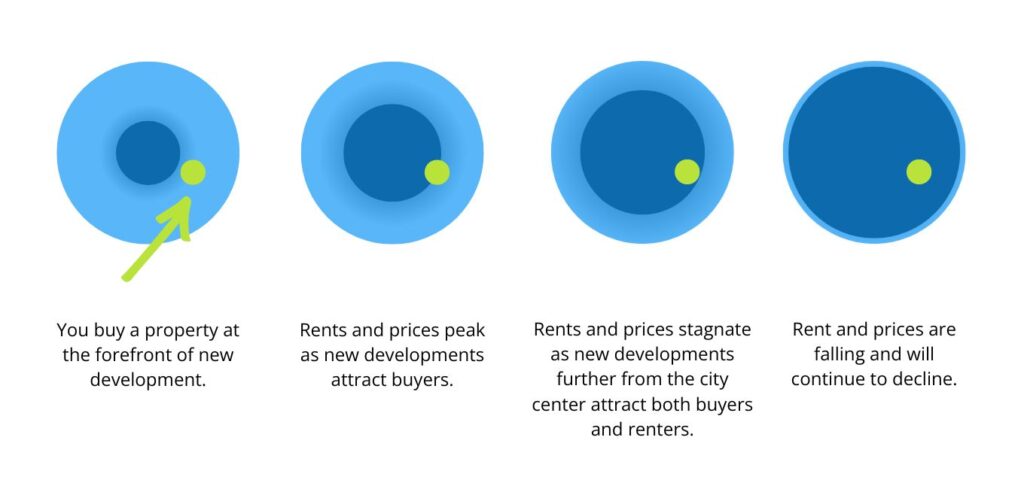A recent, excellent BiggerPockets blog post identified several cities where rents are expected to fall. Here, I’ll explore what I believe to be the common thread linking these cities.
Before I continue, I want to explain what drives prices and rents. Both are a function of supply and demand. With more buyers than sellers, prices rise until the number of buyers and sellers reaches equilibrium. Conversely, when more sellers than buyers exist, prices fall until they balance out.
Rents follow property prices. When prices or interest rates are high, fewer people are willing or able to buy homes, forcing them to rent. The increased demand for rentals drives rents up.
Conversely, more people buy rather than rent when property prices are low. This decrease in demand results in decreasing rents.
What Do Cities With Falling Rents Share?
The primary reasons for stagnant or declining prices and rents are stagnant or shrinking populations (soft demand) and/or urban sprawl (unlimited supply). Urban sprawl—the unrestricted expansion of cities—leads to new properties competing with existing ones.
Existing homes have only a slight price advantage when undeveloped land is cheap. Given a choice between old and new properties, most people opt for new ones, even at a higher cost.
Here are time-lapse aerial views of five cities mentioned in the post. These views demonstrate how these cities can continue expanding, adding excessive supplies and decreasing rent and prices.
Due to the lack of geographical constraints on expansion in these cities, properties purchased in newly developing areas today may become part of secondary markets in the future. This cycle is illustrated here.

- The first image shows a new property purchased in an up-and-coming area.
- The second image illustrates how rents and prices increase as development reaches the property.
- The third image depicts how the property becomes less desirable as the wave of development passes, causing rents and prices to stagnate compared to newer developments.
- In the fourth image, the wave of development has moved far beyond the property, leading to further declines in rents and prices. At this stage, the owner’s main option is to sell the existing property, acquire another in the path of new developments, and begin the cycle anew.
A more effective strategy is investing in cities with substantial, sustained population growth and limited expansion potential. Las Vegas exemplifies such a city, as illustrated in the GIF.
With limited raw land for expansion, new developments will primarily involve redeveloping existing areas. As a result, rents and prices of properties you purchase today will likely continue increasing due to increasing demand from population growth, while the housing supply remains relatively static.
Take the Long View
Demand drives prices and rents, primarily influenced by population changes and a city’s expansion potential. In cities with abundant, cheap land on the outskirts, newer properties cannibalize demand for existing ones.
This scenario creates a challenging cycle for investors: They must either continually sell their current properties and reinvest in new development areas, or face the prospect of stagnating—and eventually falling—rents and prices.
Find the Hottest Markets of 2024!
Effortlessly discover your next investment hotspot with the brand new BiggerPockets Market Finder, featuring detailed metrics and insights for all U.S. markets.

Note By BiggerPockets: These are opinions written by the author and do not necessarily represent the opinions of BiggerPockets.




